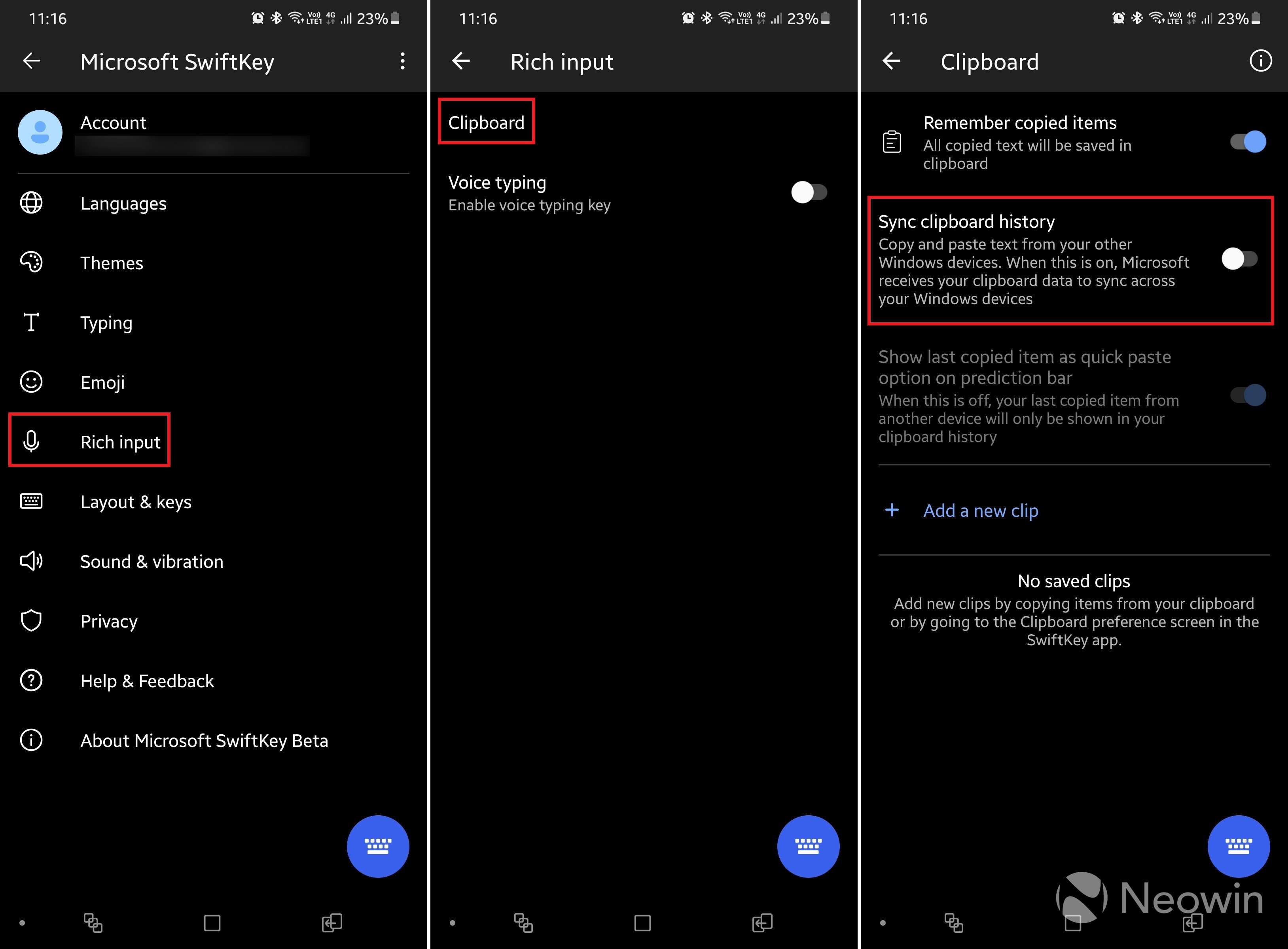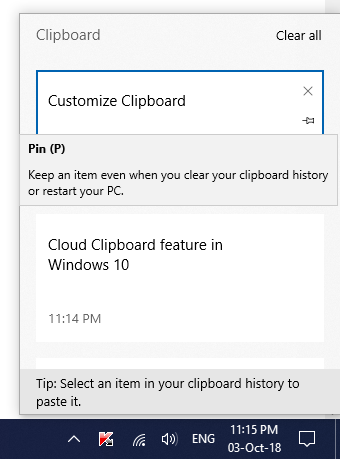You can press Windows + I, click System in Settings, click Clipboard in the left panel, and turn on the switch under Clipboard history. Tip: If you want to disable Clipboard on Windows 10 in the future, you can go to the same page and toggle the switch off. Clipboard in Windows 10 Copy images and text from one PC to another with a cloud-based clipboard. Not only can you can paste from your clipboard history, but you can also pin the items you find yourself using all the time. To get to your clipboard history at any time, press Windows logo key + V. The clipboard on Windows 10 is packed with more features than ever before! Some of the neat features include clipboard history and the ability to sync the clipboard across your devices. This wikiHow article will show you how to make use of all of the features of the Windows 10 clipboard. Allows you to share to and from your clipboard using the Share Charm. This is especially useful for bridging desktop applications with Windows Runtime applications that support sharing features. The clipboard isn't a file. Its contents are stored in the computer's memory. To use its contents, simply go to the program you want to use it in, click the place where you want it to be put, and press Ctrl-V (paste).
-->Microsoft Clipboard Android App
Definition
Important

Some information relates to prerelease product that may be substantially modified before it’s released. Microsoft makes no warranties, express or implied, with respect to the information provided here.
Provides static methods that facilitate transferring data to and from the system Clipboard.


Examples
The following example shows how to add data to the system Clipboard.
Remarks
Microsoft Clipboard Syncing
All applications for Windows share the system Clipboard, so the contents are subject to change when you switch to another application.
For a list of predefined formats available to use with the Clipboard class, see the DataFormats class.

Security Alert: For security purposes, the following points should be kept in mind.
Paste operations need to be user initiated (Ctrl-V, Paste Menu).
Copy can only be on user selected content.
On copy or cut, partial trust code puts plaintext and Extensible Application Markup Language (XAML) on to the clipboard. Plaintext includes text, Unicode text, OEM (Object Exchange Model) text, and CSV (Comma-separated values).
On paste, Windows Presentation Foundation (WPF) will paste in Extensible Application Markup Language (XAML) if the source of that content is from a equally trusted or more trusted site. Specifically:
A partial trust application can paste Extensible Application Markup Language (XAML) from a full trust application.
A partial trust application can paste Extensible Application Markup Language (XAML) from a partial trust application.
A full trust application can paste XAML only from another fully trusted application.
A non-Windows Presentation Foundation (WPF) full trust application can examine the ApplicationTrust format on the clipboard and sanitize the XAML if appropriate.
Methods
Clipboard On Microsoft

| Clear() | Clears any data from the system Clipboard. |
| ContainsAudio() | Queries the Clipboard for the presence of data in the WaveAudio data format. |
| ContainsData(String) | Queries the Clipboard for the presence of data in a specified data format. |
| ContainsFileDropList() | Queries the Clipboard for the presence of data in the FileDrop data format. |
| ContainsImage() | Queries the Clipboard for the presence of data in the Bitmap data format. |
| ContainsText() | Queries the Clipboard for the presence of data in the UnicodeText format. |
| ContainsText(TextDataFormat) | Queries the Clipboard for the presence of data in a text data format. |
| Flush() | Permanently adds the data that is on the Clipboard so that it is available after the data's original application closes. |
| GetAudioStream() | Returns a stream of Clipboard data in the WaveAudio data format. |
| GetData(String) | Retrieves data in a specified format from the Clipboard. |
| GetDataObject() | Returns a data object that represents the entire contents of the Clipboard. |
| GetFileDropList() | Returns a string collection that contains a list of dropped files available on the Clipboard. |
| GetImage() | Returns a BitmapSource object from the Clipboard that contains data in the Bitmap format. |
| GetText() | Returns a string containing the UnicodeText data on the Clipboard. |
| GetText(TextDataFormat) | Returns a string containing text data on the Clipboard. |
| IsCurrent(IDataObject) | Compares a specified data object to the contents of the Clipboard. |
| SetAudio(Byte[]) | Stores audio data (WaveAudio data format) on the Clipboard. The audio data is specified as a byte array. |
| SetAudio(Stream) | Stores audio data (WaveAudio data format) on the Clipboard. The audio data is specified as a stream. |
| SetData(String, Object) | Stores the specified data on the Clipboard in the specified format. |
| SetDataObject(Object) | Places a specified non-persistent data object on the system Clipboard. |
| SetDataObject(Object, Boolean) | Places a specified data object on the system Clipboard and accepts a Boolean parameter that indicates whether the data object should be left on the Clipboard when the application exits. |
| SetFileDropList(StringCollection) | Stores FileDrop data on the Clipboard. The dropped file list is specified as a string collection. |
| SetImage(BitmapSource) | Stores Bitmap data on the Clipboard. The image data is specified as a BitmapSource. |
| SetText(String) | Stores UnicodeText data on the Clipboard. |
| SetText(String, TextDataFormat) | Stores text data on the Clipboard in a specified text data format. The UnicodeText data to store is specified as a string. |